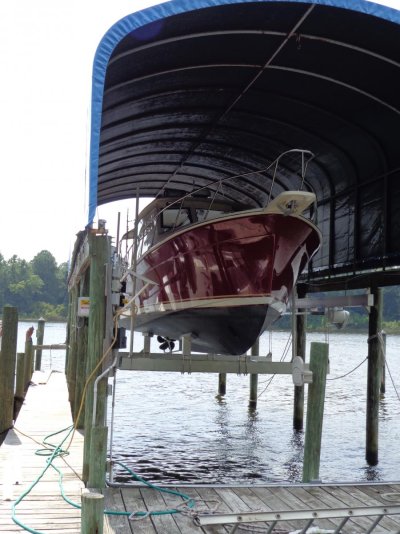firstbase
Guru
- Joined
- Nov 6, 2016
- Messages
- 1,644
- Location
- United States
- Vessel Name
- Black Eyed Susan
- Vessel Make
- Grand Banks 42' Classic
Don't want to drift the "Snubber" thread off course although it got into soft shackles a bit. Thought I'd just post separately.
This past hurricane was the third one for me that required serious boat prep. Still don't have it down. Need chains/shackles around pilings rather than tying. Good snubber system as I put an anchor off the bow for various reasons. Bought a Mantus snubber system. Too much money and more than a few concerns voiced by others but it is much better than what I had and will give it a try to see how it works for me. Am working on the chains and shackles, pretty easy fix.
My other issue I have to deal with is cleat space. That stopped me from adding more lines, just no place to put them. Not going to add additional cleats as doing that properly with backing plates is beyond my expertise and would be major surgery for someone else to do. I do read about using Dyneema and the like soft shackles or endless loops for extending cleats.
Question is whether or not they are a reasonable solution during a storm or just for less strenuous duty ? What load should I plan on? Which type of line and thickness to use? I see single and double braid. One better than the other for this purpose? In my current slip I need them mostly on the stern and midships cleats more so than the bow. It seems dhays is a resident expert on them and makes his own. Have looked at some of his posts and they are simple enough looking to make. And of course there are 5 varieties of them each with their own pros and cons. Not sure which way to go.
Thanks for any comments.
This past hurricane was the third one for me that required serious boat prep. Still don't have it down. Need chains/shackles around pilings rather than tying. Good snubber system as I put an anchor off the bow for various reasons. Bought a Mantus snubber system. Too much money and more than a few concerns voiced by others but it is much better than what I had and will give it a try to see how it works for me. Am working on the chains and shackles, pretty easy fix.
My other issue I have to deal with is cleat space. That stopped me from adding more lines, just no place to put them. Not going to add additional cleats as doing that properly with backing plates is beyond my expertise and would be major surgery for someone else to do. I do read about using Dyneema and the like soft shackles or endless loops for extending cleats.
Question is whether or not they are a reasonable solution during a storm or just for less strenuous duty ? What load should I plan on? Which type of line and thickness to use? I see single and double braid. One better than the other for this purpose? In my current slip I need them mostly on the stern and midships cleats more so than the bow. It seems dhays is a resident expert on them and makes his own. Have looked at some of his posts and they are simple enough looking to make. And of course there are 5 varieties of them each with their own pros and cons. Not sure which way to go.
Thanks for any comments.
Last edited:





